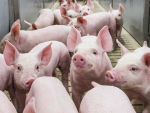Despite apparent sustained high prices, farm margins are set to remain under pressure with most farmers earning only a modest return on assets at best.
This was the big picture presented at one of the major dairy farm shows in the US last month at the World Ag Expo in Tulare, California.
The massive dairy trade show drew farmers from across North America and around the world to assess the latest and greatest in technology and attend a range of specialist seminars.
A senior agribusiness analyst with Rabobank, James De Jong, says strong demand growth had seen a convergence of prices with US farmer returns now effectively permanently above support levels and closely aligned with markets in Oceania.
Demand growth for milk powders in Asia was now the key dairy market driver and would continue to be the dominant influence in the medium turn as populations and incomes grew.
The sinking US dollar was making American dairy farmers more competitive, with the result that US dairy exports had risen sharply, to above 8% of production.
While US milk powders had traditionally traded at a discount, farmers were exporting more to cash in on unfilled demand. The major export products, whey and milk powder, were now both now running above 450,000 tonnes a year.
De Jong was more pessimistic about the global cheese market, still dominated by Western culture.
"Markets for cheese in the West are mature and consumption is declining. The cheese market will underperform with uneven prices and only modest demand growth in Asia," he says.
In the US, farmer returns were under pressure, particularly in high-cost intensive dairy regions such as California. Farmers were also facing increasing regulatory and environmental compliance costs.
Corn prices were at historic highs and there was no prospect of the cost of milk production coming down.
"The price of milk will have to stay at a relatively high level if production is to match growing global demand," De Jong says.
"There is no going back to levels where market intervention prices kick in. But farmers will have to learn to live with price volatility and develop a strategy to cope.
"High production costs will keep margins under pressure."
China will continue to be a major driver of world demand, even though there has been a slowing in demand.
Attempts to ramp up domestic production in China, including the construction of large intensive dairies, have met with mixed success.
Demand growth in India will continue to be restrained by high tariffs and does not present a huge growth opportunity in the short term.


















